We are just past the half way mark of our 10-day upper Amazon cruise, and it’s time to actually explore the Ucayali River! At 1,675 miles long, it is the 5th longest tributary and generally considered the main headwater of the Amazon River.
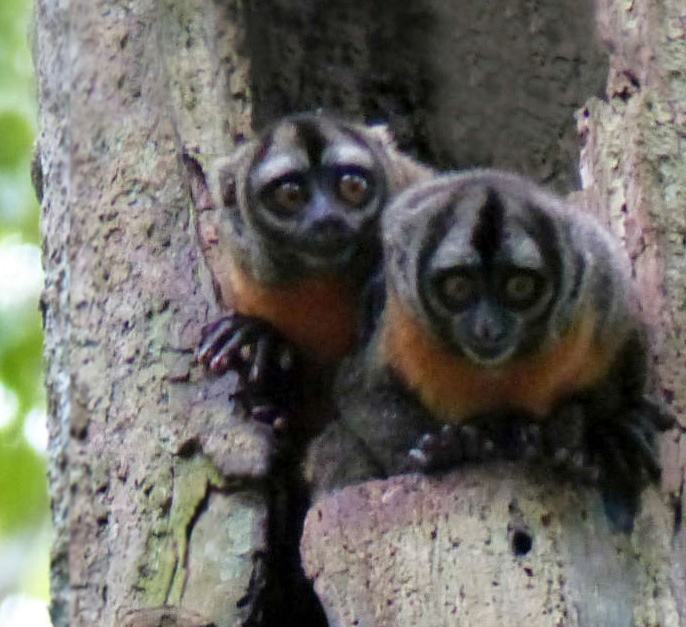
A pair of night monkeys peered inquisitively at us from their nest. Although night monkeys are nocturnal, Azara’s night monkeys are the exception – they can be equally active in the day or night.

Culinary demonstrations are always popular on cruises and this one is no exception. Held in the ship’s open air lounge, most of the passengers turned out for the class.
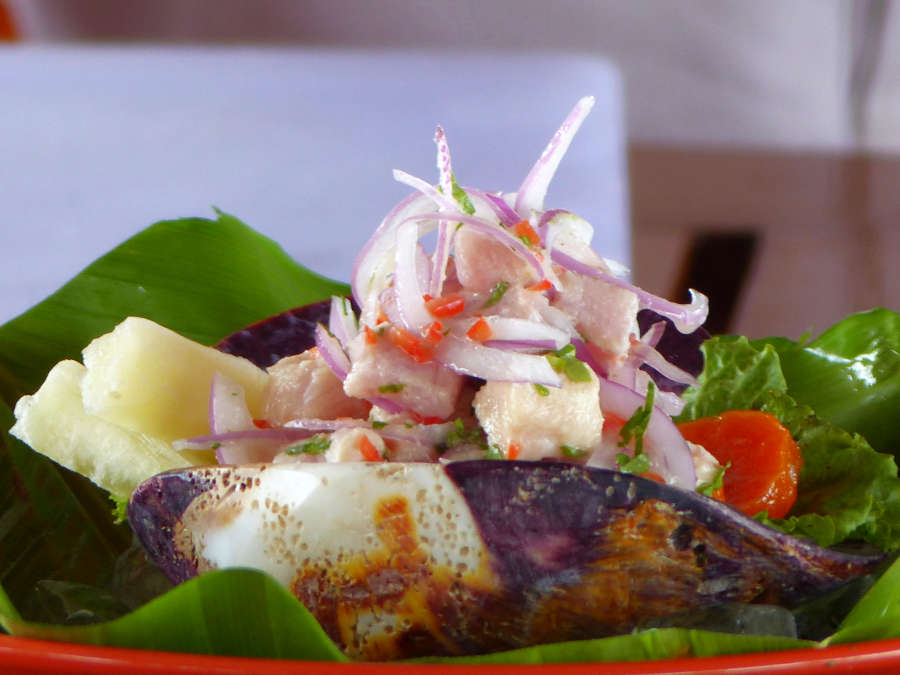
We learnt how to make ceviche leche de tigre (tiger milk ceviche) right before lunch. All in the audience got a taste of the dish, kind of like a pre-appetizer. I have to say, the food on the ship was surprisingly good, given we were in the midst of the Amazon jungle.
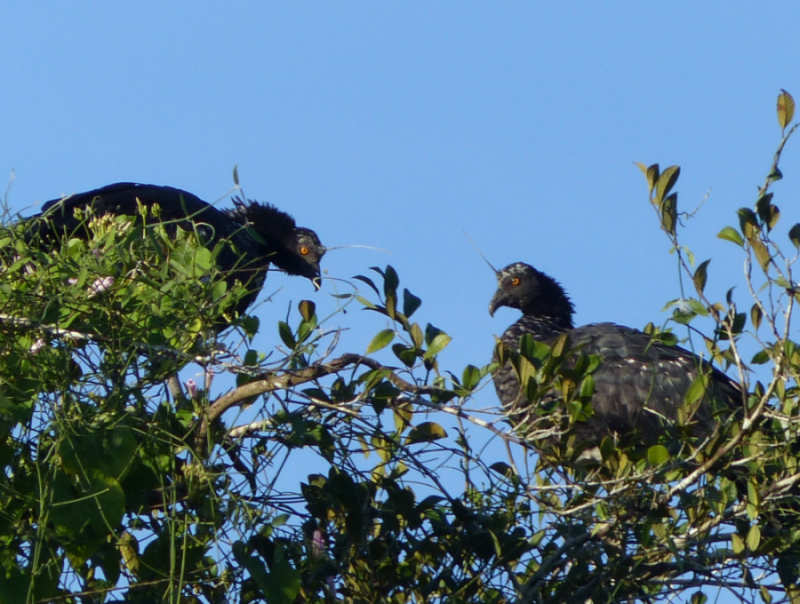
Horned screamers are large and, as you can tell by its name, vocal birds that live in the wetlands of South America. We saw a flock on our Dorado River skiff trip. Their claim to fame are the long white cartilage spurs that grow from their foreheads, which can purportedly get as long as 6 inches!
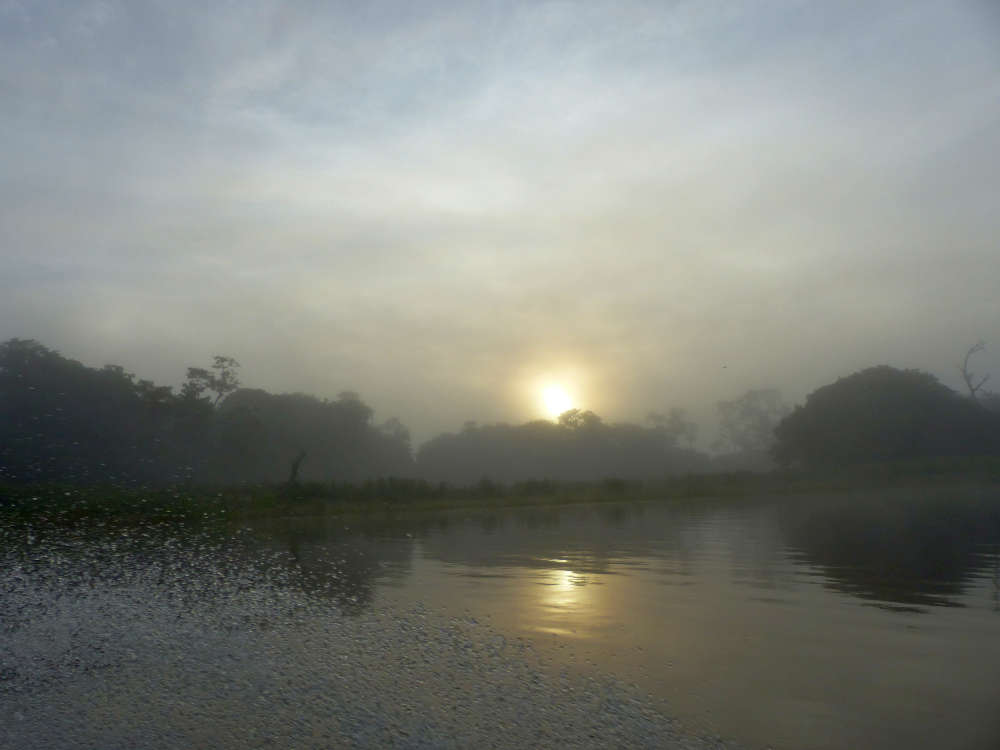
The next morning’s excursion started at an ungodly 5 am to get a head start on our jam-packed itinerary. It was going to be 7.5 hours in the Pacaya-Samiria National Reserve including an optional swim in the Yanacacu lagoon, home to the elusive pink dolphins, before heading back to the ship for lunch. The air was surprisingly chilly with a misty haze hanging over the river.

The hoatzin, which we nicknamed Ugly Bird from our prior camping trip to the Ecuadorian Amazon, is indigenous to the Amazon and Orinoco basins in South America. The boisterous pheasant-sized bird is also called skunk bird because it literally stinks. This is due to herbivore’s unique digestive tract which breaks down fruits and leaves by fermenting the vegetation in its stomach. Luckily, we were never close enough to catch a whiff of the evil smell.

This is what I’ve always imagined the Amazon to be: channeling my inner Indiana Jones and dodging overhanging branches as the trees swish by!
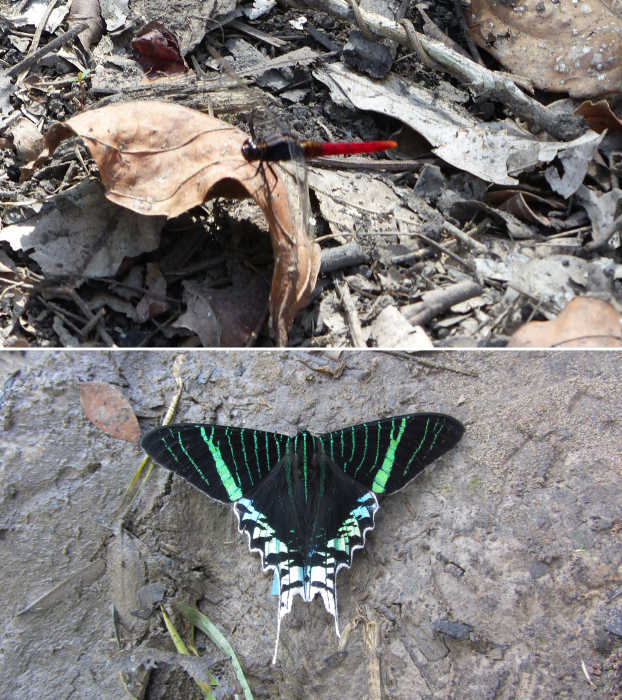
Special for today is a picnic breakfast at the ‘Jungle Cafe’, an elevated thatched shelter on the river bank. It’s also home to a simple turtle hatchery as part of the local conservation effort. As the crew was laying out the spread, we dug around the ‘hood’ and found this pretty red tailed dragonfly and neon colored green-banded urania moth. It struck me that aside from sloths and monkeys, we’ve encountered relatively few mammals in the Amazon compared to the prolific bird and insect life.
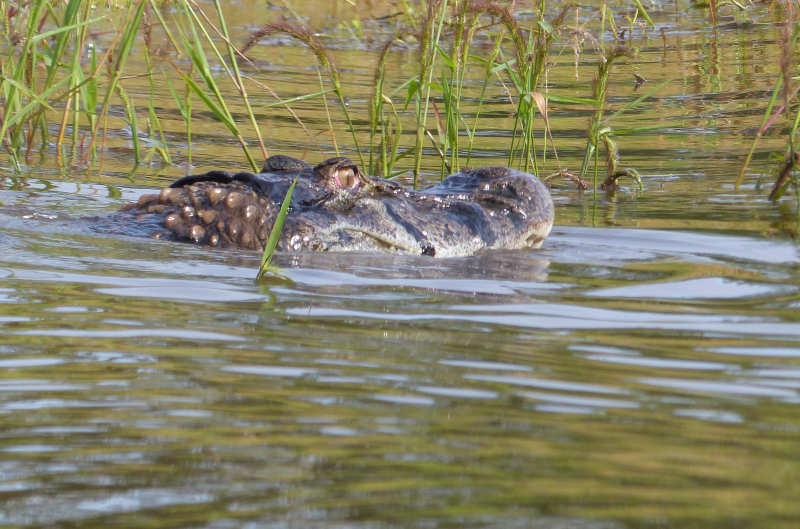
Caimans are the apex predators in the Amazon. At a length of 16 to 20 feet, black caimans are the largest of all the 3 species in the region. Once almost hunted to extinction for its distinctive skin, international treaty protection with the resulting drop in global demand helped the population to recover.
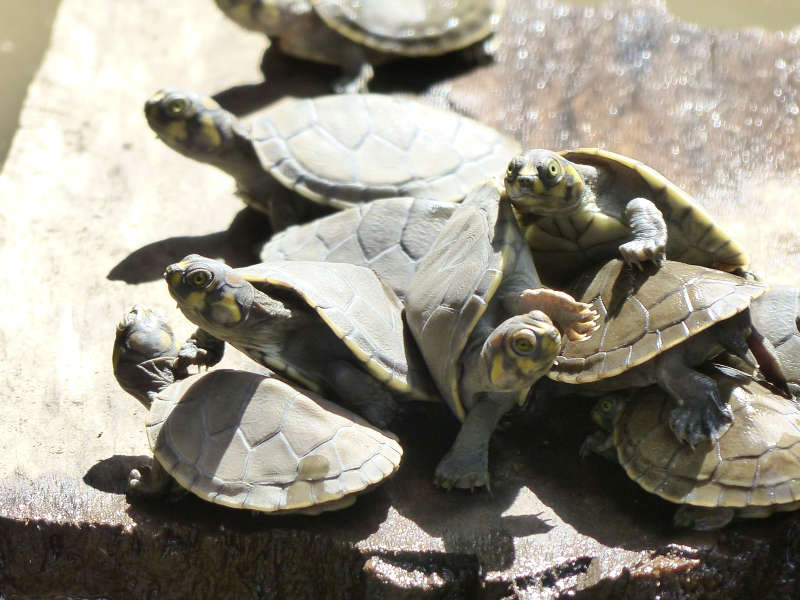
Since the sun was out, the turtles were also out in force. These yellow-spotted Amazon River turtles were jostling for a spot on the water’s edge.
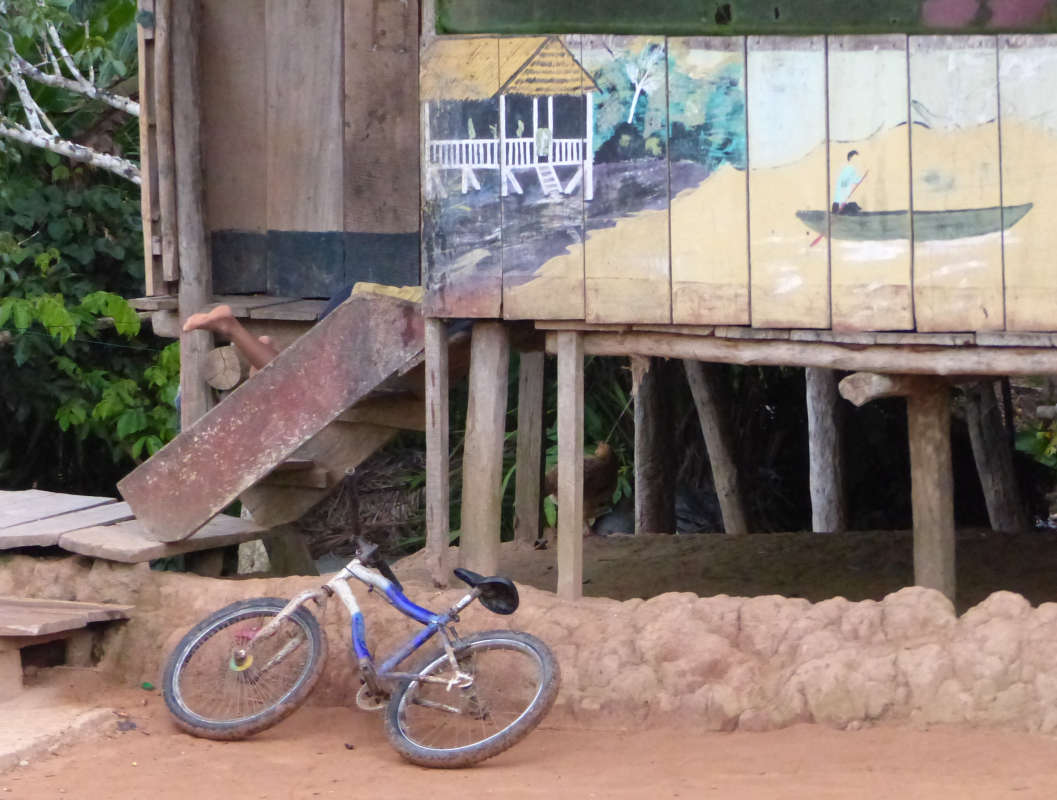
On our last full day on the river, we visited Puerto Prado to learn more about the indigenous culture. This is one of the communities supported by Minga Peru, National Geographic’s Peruvian nonprofit partner which focuses on empowering women in the Amazon and helping local families generate income sustainably. It was also the last chance to bring home the handicrafts that adorned the ship’s cabins and dining tables.

Another reason to visit the village is to see the fabled Giant Water Lily. Also called Amazon Water Lily, leaves can be as big as 8 to 10 feet in diameter and can hold a small child (or two)! The 16 inch nocturnal bloom is fragrant and white when first opened but turns pink and loses its scent in subsequent days.
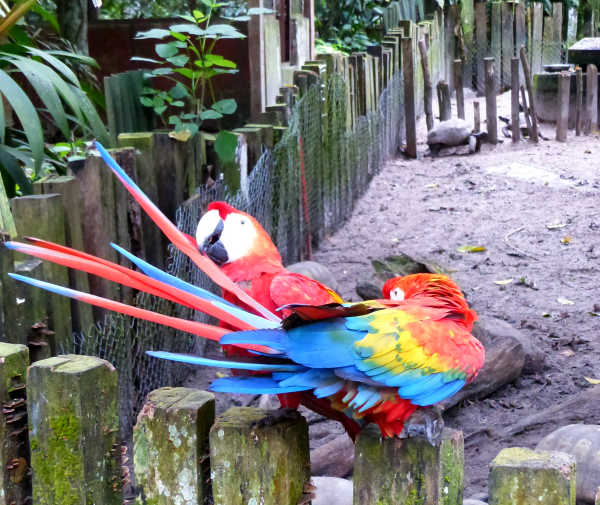
All too soon, it was time to disembark. On our way from the port of Nauta to Iquitos, we made a stop at the Amazon Rescue Center whose mission is to rehabilitate rescued animals for eventual release back to the jungle. We were greeted by a pair of preening scarlet macaws. Endemic to Central and South America, sadly most of the 17 species of macaws are endangered or extinct due to illicit poaching and loss of habitat. Aside from macaws and parrots, there were also a variety of monkeys, river otters, and turtles. The highlight was seeing the staff hand feed baby manatees in the pool.

One of the rescued moneys, a bald uakari – which is distinguished by a striking scarlet face, bald head, and long coat – was rampaging in its cage. I imagine a lot of rescued animals were traumatized by their experience in captivity, but hope it could eventually feel safe in the Rescue Center.

Iquitos is the biggest town in the world that is not accessible by road. Originally established as a Jesuit mission, its fortunes were tied to the rise and fall of the rubber trade. During its heyday in the 1800s, rubber barons built McMansions to show off their wealth. An air of elegant dilapidation settled in after the rubber bust. From the Malecon Tarapacá, the city’s bustling boardwalk, I could see a graffiti-strewn ferry slowly being overtaken by the jungle on the banks of the Rio Itaya.
I opted to cut short our National Geographic tour by one day to remain in Iquitos for the final leg of our Amazon adventure. We’ll experience the rainforest up close and personal in an eco-lodge while the rest of our shipmates fly to Lima and head home the following day. I was so excited, I could hardly wait!!


